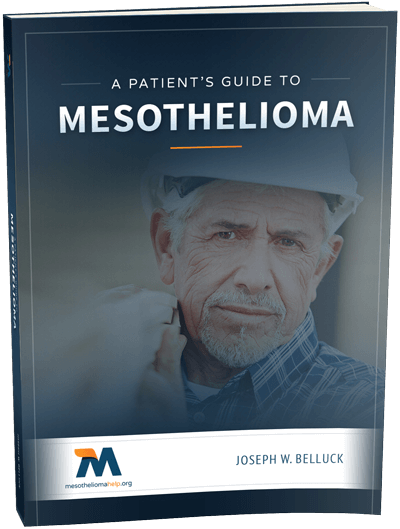Mesothelioma Help Cancer News

Mesothelioma Patients Can Benefit from Time Outside this Summer
Staying positive and maintaining your overall health to the best of your ability is key for your journey with malignant mesothelioma. This is a difficult time but there are some basic things you can do that will help you. Simply going outside is a positive step.
Going outside can do so much for your outlook or mental state and your overall health. In the United States, according to the EPA, the average American spends 90 percent of their time indoors. Going outside can boost your mood – no special equipment or membership required, just the great outdoors.
Another positive benefit of spending time outdoors is an increase in your Vitamin D. Vitamin D is beneficial to your bones, blood cells, and immune system. It can also help with the absorption of calcium and phosphorus. With decreased levels of Vitamin D a person is more likely to get colds and the flu. Also, if a person gets sick with pneumonia with decreased levels of Vitamin D, the outcome can be more serious. Sunlight can keep your serotonin levels up if you go outside as well. This will help raise your energy levels and keep your mood positive.
Just by going outside, there is a chance you may connect with people in your community. Human contact can be important to your mental health. Sometimes being inside we tend to get lost in our own thoughts and this is not always positive. Getting outdoors can distract those thoughts inside your head for even just a few moments. In fact, studies show that time in nature can boost your problem solving skills. If you are feeling frustrated or down, the outside world may change your thinking for even just a short time.
Depending on the weather there may be precautions you should take. Stay well hydrated if the weather is warm. Apply sunscreen, wear a hat, or bug spray if necessary. Also bring a phone in case you need to be in touch with someone, or may need a ride back.
Mesothelioma is a complex disease. Each case is unique, similar to one’s fingerprint. Medical centers continue to push for more knowledge and treatments. Although there are many interventions, ideas, and thoughts on how we treat symptoms, some therapeutic ideas are just basic like going outside. The good news: you don’t need to travel and it costs nothing.

Mesothelioma Patient on Importance of Staying Positive During Treatment
Once a person is diagnosed with malignant mesothelioma and decides on a treatment plan, the anticipation for treatment to begin – and the reality of when it does begin – can be a challenging time.
Recently while talking with a patient, he offered his perspective on the difference between day 1 and day 2 of beginning treatment. For him, when treatment was going to be initiated, he found his mind in a unique spot. As he took in the new faces, new information, and new surroundings, new hope was born. The anticipation of the day was finally reality, and his body and mind were going down separate paths. This experience – whether it be chemotherapy, radiation, immunotherapy or surgery – is new, a road never traveled. Although education was provided prior to his intervention it is overwhelming to say the least. This first day is like no other day of your journey.
For this patient, the second time he had treatment it was no longer a new experience. For him, the reality of what he was going through was met with dread and fear. The anticipation of treatment and hope was met with growing uneasiness. Familiar faces are not new and side effects are expected and can produce anxiety. How does one deal with these days ahead, days that once provided hope and now are filled with anxiety and fear?
Wrapping your mind around the positive and trying to focus on the ultimate goal is key. These experiences are trying times and everyone masters these situations differently. Many choose to surround themselves with their most positive support team, others surround themselves with thoughts of a brighter future. Whatever way you choose is yours, and entirely up to you.
Prior to day 2 of your journey, try to focus on the part of treatment that you found positive. Experiences like treating mesothelioma bring many new possibilities. A relationship of any kind may be positive, or a certain person may have provided a warm smile which may be all you need at that very moment.
Perhaps writing in a journal as you travel this new path will bring peace to help when you reflect back on some of your symptoms and how they are improving. When people are facing their biggest adversities, sometimes there are strong positive ideas, relationships, or experiences that may change your perspective.
Receiving a diagnosis of mesothelioma is not like any other challenges that you may have faced. As we continue to see our waiting rooms filled with new faces, we are aware of the struggles that you are facing and are here for you. If there is something that you need or have questions about, please ask. The Mesothelioma Centers of Excellence are striving for a brighter future for all who have been affected by this disease one patient at a time.

Like America, Transitions in Care are Critical for Mesothelioma Patients
As the United States awaits the peaceful transfer of power from one administration to another, transitions are at the forefront of the news. We are all being reminded of what an important role that transitions play in life. Whether the transitions be personal or public, transitions are times of change. Transitions involve communication and education, they can be physical or emotional.
The importance of transitions in dealing with the medical system cannot be understated. Transitions of care have been studied extensively in the health care system and identified as an area that needs improvement.
Different factors that can influence a successful transition of care are communication breakdown, patient education breakdown, and an accountability breakdown.
Being diagnosed with a serious illness or cancer like malignant mesothelioma can change the person’s life immediately.
A pleural mesothelioma patient that we recently visited was describing her journey with the disease. Her first symptom was a dry cough. The cough did not go away. Her family members urged her to go to her PCP and get the cough investigated. She did and was diagnosed with malignant mesothelioma within a few months. She was eligible for and had surgery.
Her journey has been full of transitions. As she spoke of her journey and what she had been through, one of the most challenging things for her was thinking of herself as being a patient with a serious cancer. She is an active person, had been on no medications, and the last thing she thought that her dry cough was from was a serious cancer.
As our patient continues on her journey with mesothelioma, her ability to deal with the disease and the change in the flow of her life are ongoing. As she adjusts to living with cancer and looks forward, one thing is certain: her life and her family’s lives have been changed.
We hope as she transitions to her “new normal” – as we hope for our country – and continues to be supported in her physical and emotional journey.

November is National Family Caregivers Month
October was Health Literacy Month and November is National Family Caregivers Month. Both of these special months highlight the importance of education, support, and understanding when dealing with or caring for a loved one. When faced with a diagnosis of malignant mesothelioma, understanding of the disease and what to look for helps both the patient and the caregiver.
The definition of health literacy from the Affordable Care Act of 2010 is “the degree to which an individual has the capacity to obtain, communicate, process, and understand basic health information and services to make health decisions.”
There is nothing simple about understanding the disease of malignant mesothelioma. From diagnosis through treatment the terminology and descriptions of the disease are difficult to understand and to even pronounce. The process of being diagnosed is usually after weeks or months of tests and scans, and after other common illnesses are ruled out. Health literacy can become an issue immediately.
A “family caregiver” is considered anyone who does not get paid but helps another person do what they can no longer do without assistance. Family caregivers provide extensive assistance which can include medications, shopping, preparing meals, cleaning, advocating, coordinating, educating – the list is very long, and the contributions vital.
For a rare serious disease like malignant mesothelioma, it is important for patients and families to understand what they are dealing with. The options for treatment can be confusing and the plan can change with further testing. The importance of being able to understand and trust your team is vital. Family caregivers are the link between the patient and their medical team. Having someone with you during this journey can be life saving. In order to give the patient the best possible chance for recovery and quality time, the family caregiver’s contribution and understanding of the disease and the patient is very important and often both overlooked and under appreciated.
Looking around, the number of people who in addition to maintaining their jobs and lives also provide care for someone else is staggering. The term “invisible army” has been given to these caregivers who often are not recognized.
We honor and thank all the family caregivers for their huge contribution to ongoing care for another person, family or not!

Mesothelioma Treatments Make Progress Through Clinical Trials
Over the years we have had the privilege of seeing people diagnosed with malignant mesothelioma in different stages of their journey. Malignant mesothelioma is a rare cancer that is difficult to diagnose and to treat. Treatment options are limited and long term quality survival is the goal with ultimately leading to a cure. Always recommended has been getting treatment at a Mesothelioma Center of Excellence and participating in clinical trials.
Treatment and research has been ongoing, but for most, painfully slow with limited successes.
The Food and Drug Administration recently approved the use of two immunotherapy drugs for the treatment of inoperable malignant pleural mesothelioma. The drugs, Opdivo (Nivolumab) and Yervoy (Ipillmumbab), were approved by the FDA in less than six weeks. The six weeks timeline was following the submission of a new Biological License Application under the FDA’s real time Oncology Review process.
These successes do not come overnight. They come in increments. They are like building blocks with this success building on the next. Not many among us are research scientists or are gifted with the knowledge and drive to conduct a clinical trial when it succeeds, but more importantly when it doesn’t. To continue with the next idea and not give up takes committed leaders and a very supportive community.
The mesothelioma community worldwide is small. For the successful clinical trial that led to the FDA approval in record time of this new treatment option, recruitment was started in September of 2016. There were 109 study locations worldwide, enrolling 606 patients. This is a collaborative effort that yielded an important treatment option for people and families that are dealing with this largely preventable rare cancer.
To participate in a clinical trial is also a courageous thing to do. For many, the results may not come in time to help them or improve their quality of life, but will help others in the future.
These numbers do not tell the story of the lives this research will affect. We have the privilege of being in a position to see the results and to put faces to the treatment options that are now being offered. The results are all scientifically quantitated and verified through the scientific process.
As we continue to see people and families affected by malignant pleural mesothelioma, we will continue to put faces and stories to their particular journey. We also remember the many brave people that entered into these clinical trials and are not able to see the success in which they had a vital part in. With this new option hopefully patients and their families will be able to enjoy quality time while further research can continue toward the cure.
Free Mesothelioma Patient & Treatment Guide
We’d like to offer you our in-depth guide, “A Patient’s Guide to Mesothelioma,” absolutely free of charge.
It contains a wealth of information and resources to help you better understand the condition, choose (and afford) appropriate treatment, and exercise your legal right to compensation.
Download Now